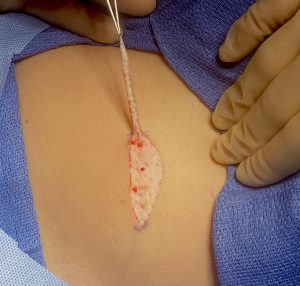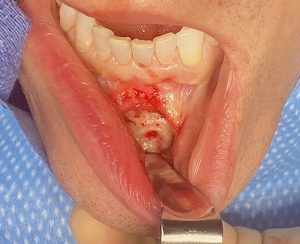Background: The sliding genioplasty is an effective chin augmentation procedure. In certain types of aesthetic chin surgery it is a better alternative than an implant. But it is not a complication free procedure. One of its potential side effects is long term tightness. The chin has an uncomfortable tight feeling which may affect the mobility of the lower lip. The vestibule may or may not be stuck down or lower in depth than normal.
When this occurs surgeons typically think of three potential causes. The first is that hardware on the surface of the chin is causing a soft tissue adhesion and hardware removal is recommended. The second, if the chin was advanced far enough, is that the chin is now too far forward for the soft tissue envelope and a subtotal or total bony setback advised. The third potential cause, although not necessarily improvable, is that the mentalis muscle has been sutured too tightly.
In some patients either of these two treatment approaches may provide some relief. But hardware removal almost never works while bony setback usually provides some symptomatic improvement. But both miss the actual origin of the problem even though the setback approach partially addresses it…even if most surgeons do not completely understand why.
Tightness of the chin and lower lip is almost always due to a soft tissue deficiency. The abnormal shape of the chin bone after significant sliding genioplasties creates a mismatch between the bone surface that needs to be covered and the amount of soft tissue that needs to cover. Known as a dead space beneath the mentalis muscle closure over it wound contraction and tight tissues can occur. Treating a soft tissue deficiency is best done by adding back soft tissue.
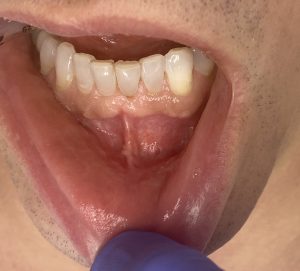
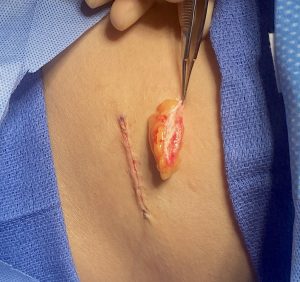
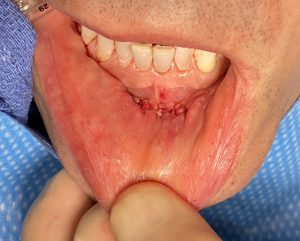
Anatomically many chin tightness issues after a sliding genioplasty are caused by scar contracture into the newly created dead space above the expanded bone surface. Plate removal seems like logical treatment approach but it alone doesn’t create more unscarred soft tissue. I would encourage those who have their chin hardware removed due to chin tightness/restriction to have a fat graft placed at the same time. There is no harm in doing so and their benefit to filling the dead space beneath the soft tissue closure.
Case Highlights:
1) Tightness after a sliding genioplasty usually implies a contracture problem. (soft tissue deficiency)
2) The origin of the tightness and the soft tissue deficiency is the abnormal bony step off as the lower chin bone is moved forward.
3) If one is happy with the aesthetic chin projection then a soft tissue release and fat grafting can be a treatment option.
Dr. Barry Eppley
Indianapolis, Indiana




